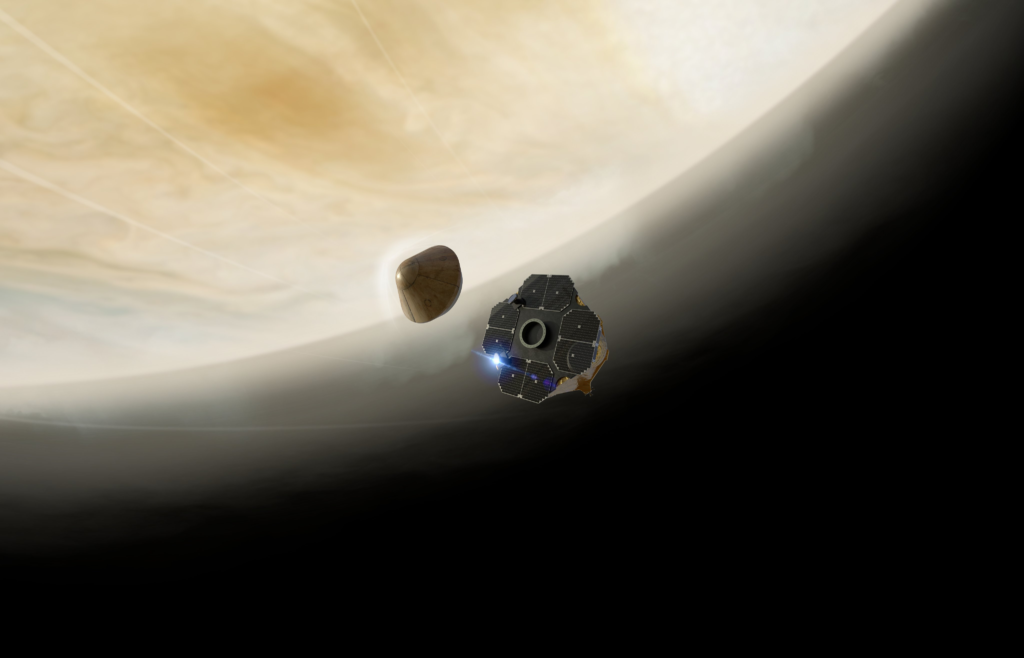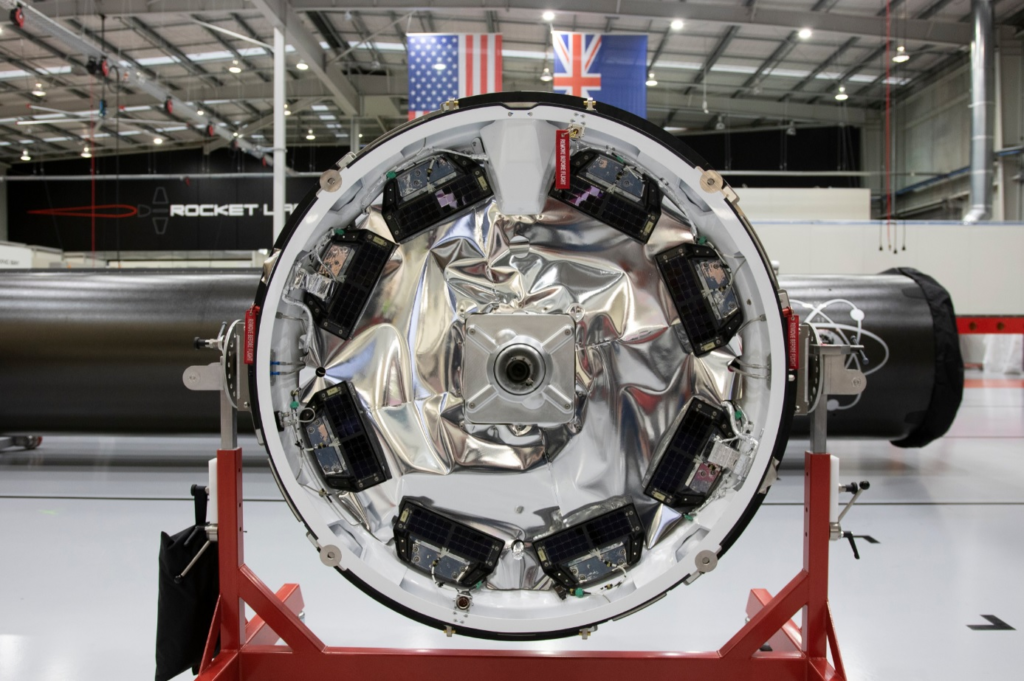
New Update On Rocket Lab’s Mission To Venus
Rocket Lab has been making some very impressive progress over the last few years. This includes making history with unique missions and first ever launches to different destinations within the solar system. A great example happened only months ago when Rocket Lab managed to send the CAPSTONE payload on a trajectory to the Moon with only Electron and a lunar Photon.
However, this launch was just the first step in an increasingly ambitious launch schedule and cadence. Specifically, the company is working towards an upcoming mission to Venus. This mission, supported by a science team at MIT, is the 1st private mission to Venus & 1st opportunity to probe the Venusian clouds in nearly 4 decades.
Rocket Lab is advancing what is capable with just a small lift launch vehicle and an additional third stage. As they continue to push this boundary, they also work towards new missions to Mars, and even the Neutron launch vehicle. Here I will go more in-depth into the recent update provided by Rocket Lab, what exactly this mission entails, and when we should expect to see it happen.
Recent Updates

As usual, Rocket Lab has been providing consistent updates on different projects and upcoming events to look out for. Just a few days ago on August 16th the company tweeted saying, “We’re sending our Photon spacecraft to Venus in search of life. Supported by a science team at @MIT, this is the 1st private mission to Venus & 1st opportunity to probe the Venusian clouds in nearly 4 decades.” This tweet included a link to a more detailed paper highlighting the details of the mission among other things.
Back in September 2020, scientists at MIT and Cardiff University announced they had observed what may be signs of life in the clouds of our planetary neighbor, Venus. Their observations indicated the potential presence of phosphine, a gas typically produced by living organisms. In 2023, Rocket Lab is sending the first private mission to Venus to help gather further evidence. The goal, using an Electron launch vehicle and Photon spacecraft, is to send a probe to around 30 miles’ altitude, where Venus’ atmospheric conditions are closer to those found on Earth.
Research suggests Venus was once a habitable planet similar to Earth. A 2019 study from NASA’s Goddard Institute for Space Studies found that Venus could have had shallow oceans on the surface for two to three billion years and this would have supported temperatures of between 68 to 122 degrees Fahrenheit. Around 700 million years ago though, a resurfacing event released carbon dioxide into the atmosphere, turning Venus into a dangerous, inhospitable planet where atmospheric temperatures reach 1,000 degrees Fahrenheit.
More specifically, the baseline mission is planned for launch in May 2023 on Electron from Rocket Lab’s Launch Complex 1 with a backup launch opportunity in January 2025. The launch opportunity will be selected to allow for a Trans-Venus Injection on the 24th of May 2023, after sequential phasing orbits around earth and a lunar gravity assist. As was demonstrated on Rocket Lab’s successful Cislunar Autonomous Positioning System Technology Operations and Navigation Experiment, or (CAPSTONE) mission for NASA. The mission will follow a hyperbolic trajectory with the high-energy Photon performing as the cruise stage and then deploying a small probe into the Venus atmosphere for the science phase of the mission.
A Mission To Venus

The recent paper on this mission highlights the Photon spacecraft, its trajectory, the atmospheric probe itself, science objectives, and more. Starting with Photon, a self-sufficient small spacecraft capable of long-duration interplanetary cruise. They describe that Photon’s power system is conventional, using photovoltaic solar arrays and lithium-polymer secondary batteries. The attitude control system includes star trackers, sun sensors, an inertial measurement unit, reaction wheels, and a cold-gas reaction control system. S-band or X-band RF ranging transponders support communications with the Deep Space Network, or with commercial networks and enable traditional deep space radiometric navigation methods. A Global Position System receiver is used for navigation near Earth. A change in delta greater than 3 kilometers a second is provided by a storable, re-startable bi-propellant propulsion system called Hyper Curie using electric pumps to supply pressurized propellant to a thrust vector-controlled engine. Not long ago Rocket Lab provided an update on this engine and what it is capable of. Specifically, in April earlier this year, the company provided a tweet saying, “The HyperCurie engine in action preparing for the CAPSTONE mission to lunar orbit for @AdvancedSpace and @NASA! This small but mighty engine will perform a series of orbit raising maneuvers before the final trans-lunar injection burn to set CAPSTONE on a course for lunar orbit.” This included a short video of the engine in a hot fire test. Focusing back on the mission to venus, the propellant tanks achieve high propellant mass fraction and can be scaled to meet mission-specific needs. Altogether, this creates a very capable third stage helping Electron take payloads to different planets.
In terms of the trajectory, Electron first delivers the high-energy Photon to a circular parking orbit around Earth at roughly 165 km. After separating from Electron’s Stage 2, Photon performs preprogrammed burns to establish a preliminary elliptical orbit of 250 km by around 1200 km. The high-energy Photon then performs a series of burns through increasingly elliptical orbits, each time raising the apogee altitude while maintaining a nearly constant perigee, reaching a maximum apogee of roughly 70,000 km. Breaking the departure across multiple maneuvers is an efficient approach to Earth escape. By holding burns close to perigee and limiting their duration, propulsive energy is efficiently spent raising apogee while avoiding the burn losses associated with long duration maneuvers. Each phasing maneuver is followed by a planned number of phasing orbits at the new apogee altitude. Phasing orbits provide time for on-orbit navigation, maneuver reconstruction and planning, propulsion system calibration, and conjunction screening. Each planned maneuver includes contingency options to mitigate conjunction events or missed maneuvers. After the nominal apogee raising maneuvers are performed, a final injection burn is executed to place high-energy Photon on the escape trajectory. Trajectory correction maneuvers using the Hyper Curie engine or integrated RCS are used to make fine adjustments to the trajectory and target the appropriate entry interface.
Next, in October 2023, after the cruise phase, the Photon will target an entry interface to deploy a small, around 20 kilogram probe, directly into the atmosphere with an entry flight path angle between −10 and −30 degrees, with a baseline of −10 degrees. The probe communicates direct-to-Earth through an S-band communications link with a hemispherical antenna returning science data captured during the descent and stored on board. The entry interface will be selected to satisfy science objectives (night-side entry and latitude targeting), Earth communication geometry, and other factors. The EFPA will be selected based on an analysis of the entry and descent timeline, the integrated heat load and required thermal protection system thickness, probe acceleration (g-loading) limits, navigation precision, and other factors.
The high-energy Photon is designed for launch on Electron, Rocket Lab’s dedicated small launch vehicle. Electron can lift up to 300 kg to a 500 km orbit from either of two active, state-of-the-art launch sites: LC-1 on the Mahia Peninsula in New Zealand and Launch Complex 2 on Wallops Island, Virginia. Electron is a two-stage launch vehicle with a Kick Stage, standing at 18 m tall with a diameter of 1.2 m and a lift-off mass of about 13,000 kg. Electron’s engine, the 25 kN Rutherford, is fueled by liquid oxygen and kerosene fed by electric pumps. Rutherford is based on an entirely new propulsion cycle that makes use of brushless direct current electric motors and high-performance lithium-polymer batteries to drive impeller pumps. Electron’s Stage 1 uses nine Rutherford engines while Stage 2 requires just a single Rutherford vacuum engine. Rutherford is the first oxygen/hydrocarbon engine to use additive manufacturing for all primary components, including the regeneratively cooled thrust chamber, injector pumps, and main propellant valves. All Rutherford engines on Electron are identical, except for a larger expansion ratio nozzle on Stage 2 optimized for performance in near-vacuum conditions. The high-energy Photon replaces the Kick Stage for Electron missions beyond low Earth orbit. If everything goes according to plan, Rocket Lab will reach another milestone with this mission.
Conclusion
Rocket Lab is continuing to try and push the boundaries of what is possible. The recent mission to the Moon is a great example, using only Electron and a lunar Photon. Now they are working towards even more ambitious missions. We will have to wait and see how it progresses and the impact it has on the space industry.
